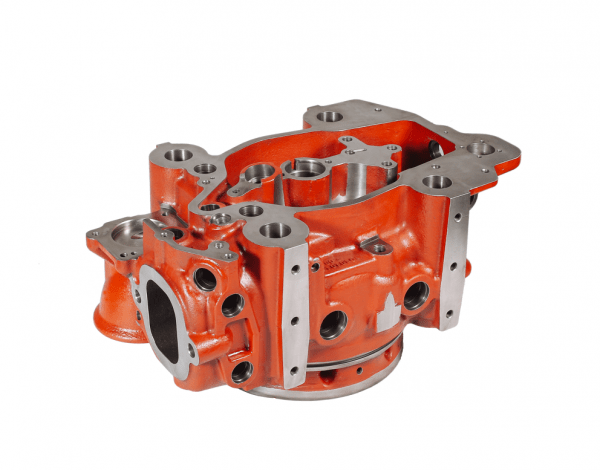What are the Cost Drivers for Sand Casting?
Sand casting is a cost-effective way of producing parts in a wide range of metals. However, a close look at the process and the part being made can sometimes reveal opportunities to save money. The key is knowing which factors contribute most to the cost.
Recurring and Non-Recurring Costs
Sand casting is a metal forming process. Molten metal is poured into a cavity formed in sand and allowed to solidify. Once cool, the cast part is broken out of the sand and runners and risers, (the channels through which metal flows in and out of the cavity,) are removed. From here the part goes into machining where tight tolerance features like holes, threads and mounting surfaces are produced.
Some of the costs of producing a sand cast part are incurred with every cycle or piece. Others are incurred only at the start of or prior to production. These are considered non-recurring.
Recurring Costs
Metal is a recurring cost: it’s required for every part cast. So too are the energy used to melt the metal and the labor needed to create the cavity, remove the casting and prepare it for machining. (Automated sand casting systems used for high volume production have minimal direct labor costs.)
Other significant costs include sand and inspection. Sand is consumed in the process, although casting operations are able to recover and reuse a high proportion. Inspection and testing, whether for dimensional check or casting defect detection, that should be considered a recurring cost.
Non-Recurring Costs
These relate to the tooling that forms the cavity and the time needed to set up the equipment or process. The major items of tooling are for the pattern and any additional cores.
Pattern tooling comprises pieces that look like the part being cast, only larger with various allowances and draft angle added, and pieces that form the metal delivery system. Tooling for Cores are to produce additional inserts whose purpose is to create voids inside the casting. (For example, valve bodies typically need cores.)
Tooling for sand casting can be used multiple times. Eventually though, it will wear out. (In this context “wearing out” means it’s worn by the process of packing sand around it and can no longer maintain the dimensions and tolerances needed.) Inexpensive tooling for small quantity production is often made from wood or plastic. Metal is preferred for higher volumes.
While tooling costs are incurred only at the start of production, set up costs happen at the start of each production run. These relate to the labor and materials needed to get the casting equipment ready.
Quantity Drives Costs
Non-recurring costs are spread over the number of parts being cast. For large quantity orders satisfied by long production runs, tooling and set up costs become a very small fraction of the total cost. Conversely, when a production run is short, tooling and set up costs tend to predominate. Understanding and acting on cost drivers means taking quantities into account.
Cost Drivers in High Quantity Orders / Long Production Runs
The biggest factor is the volume and type of metal used for the part and runners and risers. This drives energy costs, production rate and even tooling costs. From this it follows that to reduce the cost of a sand casting, look to use less expensive metal in smaller quantities.
Metal prices are influenced by the alloying elements used. Within families of similar metals some are more castable, (meaning they have better flow properties,) than others. Metals that flow better will typically result in slightly lower piece costs. Casting specialists can advise on whether switching from one alloy to another provides benefits in specific cases.
Low Volume / Prototyping Cost Drivers
In small quantity scenarios tooling costs usually outweigh the cost of the metal. Thus the way to make savings is to simplify, and if possible, shrink, the tooling. Specific aspects to look at include:
- Split the casting into smaller pieces for later welding or assembly (allows the use of smaller flasks)
- Reduce complexity — machine internal features instead of using cores
- Review machining and distortion tolerances applied — opening these up simplifies the pattern-makers job
- Make tolerances as generous as possible
Prioritize by Quantity
Manufacturers everywhere are under pressure to reduce costs and for many, sand casting is one avenue to explore. For small quantity orders start by looking for ways to simplify tooling, even at the expense of adding secondary operations. In high quantity production tooling costs have only a small impact on total costs: here the way to make savings is by reducing the amount of metal used, and perhaps switching to a less expensive alloy.
